Notes
BagNews, Paolo Pellegrin and Reading the Pictures
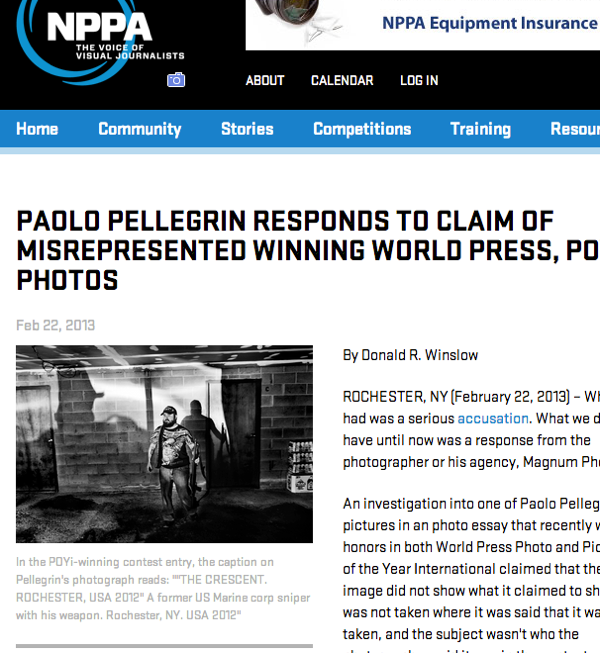
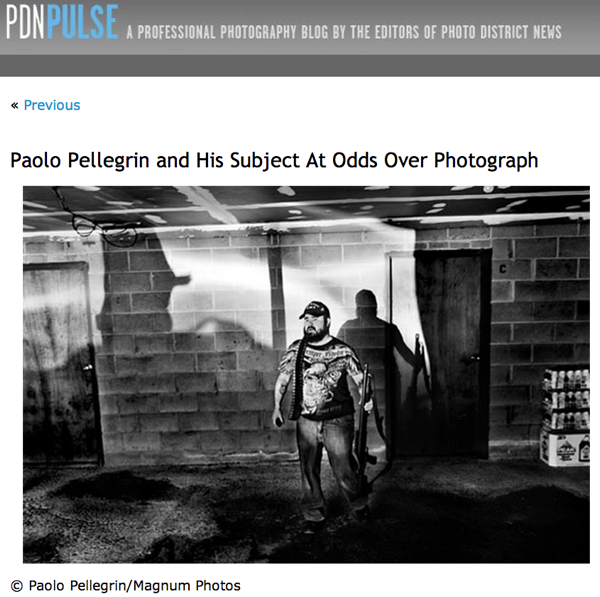
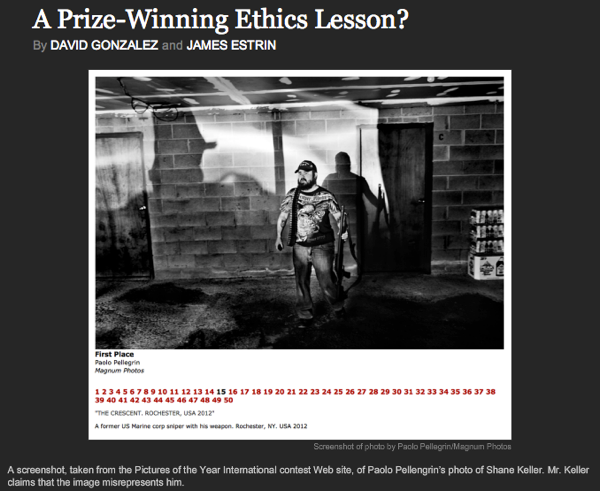
Examining the tiniest, seemingly mundane details of an image to extract its power, its meaning, and its message, the [BagNews] Notes blog (part of a larger site featuring original photography and live interactive discussions) fulfills its mission of “reading the pictures” by starting provocative conversations about how the media illustrate the biggest stories of the day.
— LIFE.com 2011 Photo Blog awards
There are art critics, film critics and television critics. Well, I’m a hybrid born out of media and political criticism: I’m an analyst and critic of news photographs.
–The Creation and Reception of Political Imagery. Association for Education in Journalism and Mass Communication (AEJMC) Conference. St. Louis. August 2011 (opening sentence, panel presentation)
Yesterday morning, the BagNews Notes section published a post about the accuracy of a photo by Magnum’s Paolo Pellegrin as it appeared on two award sites, World Press Photo and the Picture of the Year. Our critique of those published images was based on the account of a then-RIT photo student who was the subject of the photo. (You can see our post here.)
Besides the wide hearing of our analysis, the other notable effect from yesterday’s critique was the counter-critique that BagNews “failed to contact” Mr. Pellegrin in advance or “give him the chance to reply.” I welcome the chance to speak to that, and to clarify a fundamental misperception people make about the role and practice of BagNews relative to news photography.
What is essential to understand about our role is that we are critics, not reporters. That may be confusing to some because there are not a lot of practicing visual news or, especially, news photo critics around. But our role and what we do — deemed essential by esteemed colleagues from visual media to academia — is no different from what art critics or television critics or theater critics or film critics do. (I should add, when a film critic perceives a flaw or an inconsistency, he or she doesn’t call up the writer or director for an explanation or an opportunity for rebuttal, he or she deconstructs the content as meticulously and conscientiously as he or she can.) What I, and my contributors do, just like other critics covering other forms of media, is analyze the manifest representation of something expressive, often social or political in nature just like news photography, and we critique it for context, for its informational value and veracity, and for what it purports to do versus what it actually does.
To that extent, what we’re concerned with at BagNews is not the integrity of a person but the integrity of the image and as well as the titles, captions and any other attendent information presented in the elaboration or justification of that imagery. Because Mr. Pellegrin did gain the opportunity to speak to the accuracy of his imagery and the supporting captions and titles, and today’s a new day, we’re interested now in how multiple photo news sites, including NPPA, PDN and NYT Lens blog, generated a fresh collection of imagery and supportive text yesterday in response to our critique.
Using the same method of analysis we employ everyday — and have applied now in over 5000 posts over the past eight years (not to mention numerous conference and seminar presentations, such as “The State of the News Photo” presentation at Photoville in Brooklyn last June, or “The Methodology of BagNewsNotes” super session panel at the elite Rhetoric Society of America Conference in Philadelphia last May) — you can judge for yourself how Mr. Pellegrin’s comments generated in print yesterday stack up in comparison to the controversial visual and accompanying descriptive text on the award sites.
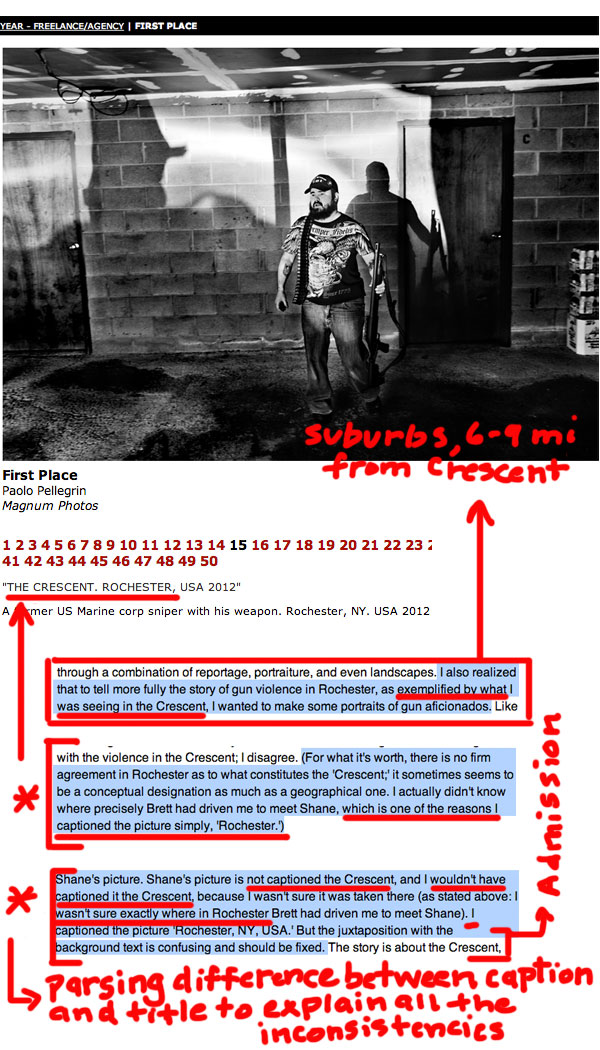
In this first example, we’re looking at the award photo, title and caption against screen grab quotes from yesterday’s NPPA article and interview by Donald Winslow.
One of our core critiques of Mr. Pellegrin is that he photographed Shane Keller at his apartment in the suburbs but attributed the location in his award submissions to “The Crescent,” a notorious drug and crime riddled part of urban Rochester. As is our standard methodology, we elaborate how Mr. Pellegrin, not just through his photo, title and caption, but through his interview comments, tries to differentiate the information in his title from what he’s written in his caption, finally offering an admission of culpability for the misrepresentation.
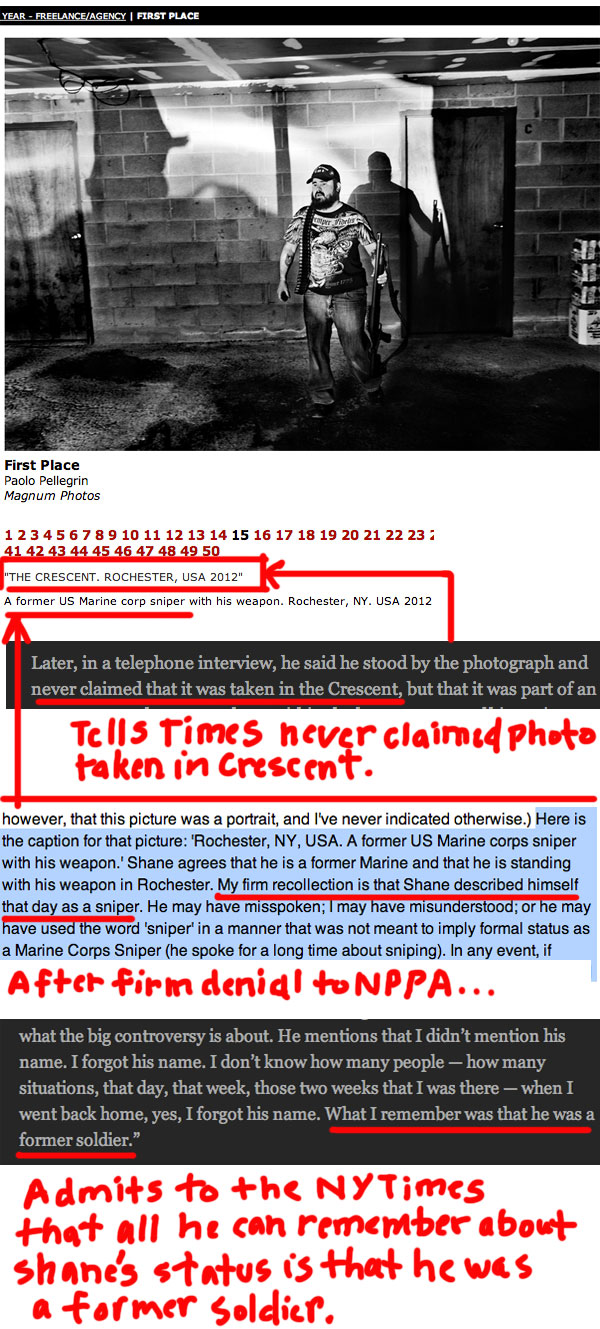
In this analysis, we examine the award photo, title and caption against screen grab quotes from the Magnum statement he gave to PDN as well as the comments (in black) he made to the NYT Lens blog yesterday. Another key point of our critique involved Pellegrin’s characterization of Shane Keller (inferred as residing in or at least frequenting the Crescent) as a former military sniper when Keller was never more than a military photographer. As you can see, Pellegrin misrepresents his recollection as “firm” to the NPPA but then admits to the limit of his recollection to the NYT.
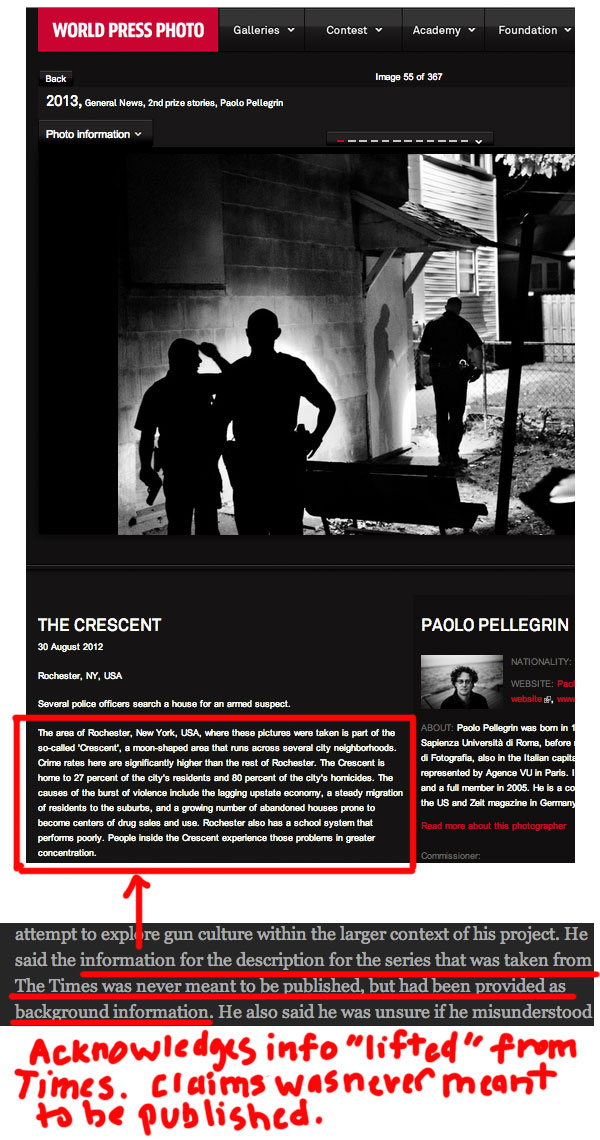
In this last set of visuals and accompanying text, we see the World Press award page along with associated copy from the Lens interview. In our critique yesterday, we discussed how Pellegrin had plagiarized ten year old copy from the NY Times which World Press and POY, in turn, used as extended caption and background description on the Crescent. The analysis is self-explanatory.
If the mission of our site was traditional news reporting or investigative journalism, we would surely have been remiss for not offering Mr. Pellegrin a platform to respond to our image critique. As it turns out, however, he was afforded thorough access by those leading organizations that actually do specialize in the reporting of photo news. As we wrote yesterday, we take no pleasure in casting shadows or causing upset to a distinguished and renowned photographer, a truly legendary photo agency as well as the two premier grantors of photojournalism awards (especially as we were a recipient of a POY award for a multimedia piece produced for a different section of our site a few years back). At the same time, our concern for the visual literacy of the media consumer and the integrity of the news image is something we don’t take lightly in practicing the art of critique and we look forward to reading the pictures along with our committed readers for many years to come.
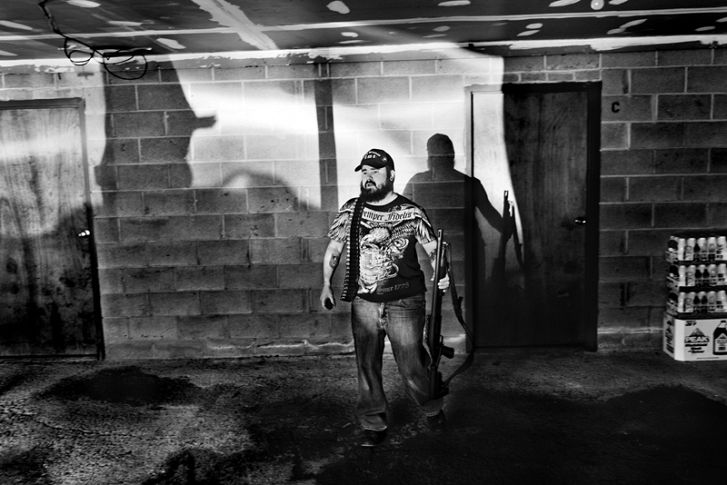
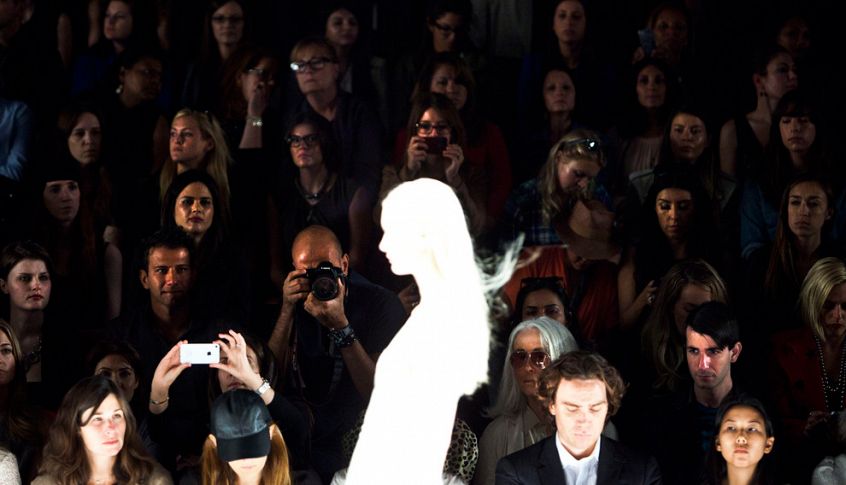
Reactions
Comments Powered by Disqus